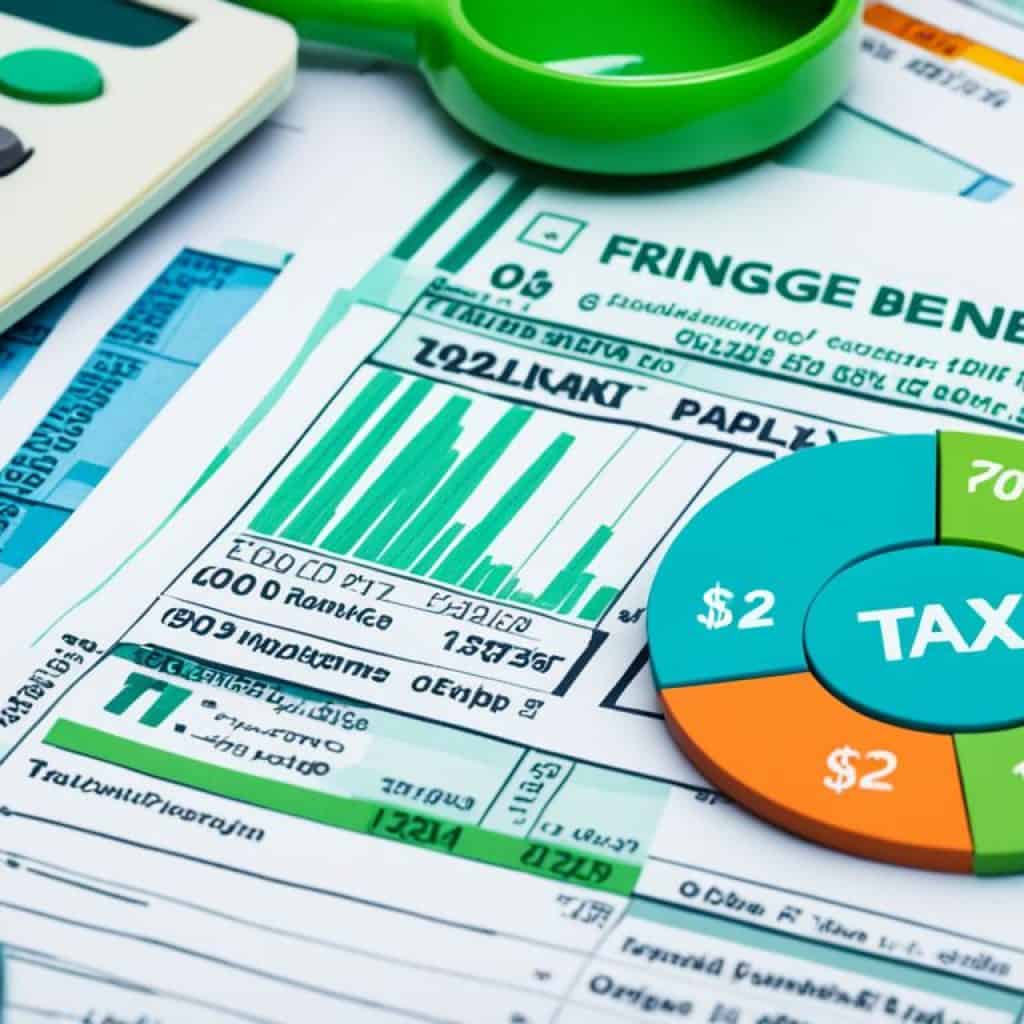Do you think navigating the tax system in the Philippines is a complex and daunting task? Are you aware of the latest tax reforms and updates in the country? If you’re curious about the tax system in the Philippines, its rates, and the forms you need to fill out, you’re in the right place. In this comprehensive guide, we will provide you with all the information you need to navigate the intricacies of taxation in the Philippines and ensure compliance with the tax laws and regulations.
Key Takeaways:
- Understanding the tax system in the Philippines is crucial for individuals and businesses.
- The Philippines follows a territorial tax system where only Philippine-sourced income is subject to taxes.
- The corporate income tax rate in the Philippines is 25%, with further reductions planned until it reaches 20% in 2027.
- Withholding taxes apply to various types of income, including dividends, interest, royalties, and fringe benefits.
- The Philippines has a progressive personal income tax rate with different tax rates based on income brackets.
Tax Structure in the Philippines
The tax system in the Philippines is designed around a territorial tax structure, meaning that only income generated from Philippine sources is subject to taxation within the country. This applies to both corporate and personal income, providing clarity and consistency in tax regulations.
Foreign companies operating in the Philippines have a corporate income tax rate of 25%, which has been reduced from the previous rate of 30%. The government further plans to gradually lower this rate to 20% by 2027. On the other hand, domestic micro, small, and medium-sized companies enjoy a preferential rate of 20%, which contributes to a favorable business environment.
Withholding taxes are an essential component of the tax system in the Philippines. They are applicable to various types of income, such as dividends, interest, royalties, and fringe benefits. These withholding taxes ensure that the appropriate amount of tax is deducted at the source, promoting compliance and simplifying tax collection.
The personal income tax in the Philippines follows a progressive structure, with different tax rates based on income brackets. This means that individuals with higher income levels bear a larger portion of the tax burden, while those with lower income levels enjoy tax relief. The progressive nature of the personal income tax system contributes to fairness and equitable distribution of the tax burden.
Tax Rates in the Philippines
| Taxable Income Bracket | Tax Rate |
|---|---|
| Up to PHP 250,000 | 0% |
| PHP 250,000 – PHP 400,000 | 20% |
| PHP 400,000 – PHP 800,000 | 25% |
| PHP 800,000 – PHP 2,000,000 | 30% |
| PHP 2,000,000 – PHP 8,000,000 | 32% |
| Above PHP 8,000,000 | 35% |
The progressive tax rates allow individuals with lower incomes to keep more of their earnings, fostering financial stability and economic growth. Additionally, periodic updates and reforms to the tax system ensure that it remains relevant and aligned with the country’s economic goals.
In the words of renowned economist John Maynard Keynes, “The hardest thing in the world to understand is the income tax.” However, the tax structure in the Philippines is designed to provide clarity and fairness, enabling individuals and businesses to navigate the system confidently and contribute to the country’s development.
Section 2 provides an overview of the tax structure in the Philippines, highlighting its territorial nature and the application of different tax rates for corporate and personal income. Withholding taxes play a crucial role in promoting compliance, while the progressive personal income tax system ensures a fair distribution of the tax burden. The table presents the tax rates applicable to different income brackets, offering clarity and transparency. Understanding the tax structure is vital for individuals and businesses operating in the Philippines to fulfill their tax obligations and leverage any available tax benefits.
Corporate Income Tax in the Philippines
In the Philippines, the corporate income tax (CIT) rate is 25%. This rate applies to both resident and non-resident companies and is levied on their net income from all sources. However, there are certain provisions that offer preferential rates for different types of companies.
Foreign companies can enjoy a reduced CIT rate of 25% from July 2020 to 2022. Furthermore, there are plans for further reductions in the CIT rate for foreign companies until it reaches 20% in 2027.
Domestic micro, small, and medium-sized companies have a preferential rate of 20% for taxable income up to PHP 5 million. This lower rate is an incentive provided to support the growth of local businesses.
It’s important to note that non-resident companies are only taxed on their Philippine-sourced income, while domestic companies are taxed on their worldwide income. This means that non-resident companies are only subject to CIT for the income they generate within the Philippines.
Additionally, the Philippines has a minimum corporate income tax (MCIT) of 2%. The MCIT is imposed on the gross income of both domestic and resident foreign corporations. However, it only applies if the standard CIT is lower than the MCIT. The purpose of the MCIT is to ensure that companies pay a minimum level of tax, regardless of their deductions or exemptions.
| Type of Company | CIT Rate |
|---|---|
| Foreign Companies | 25% |
| Domestic Micro, Small, and Medium-Sized Companies | 20% for taxable income up to PHP 5 million |
| 25% for taxable income above PHP 5 million |
Understanding the corporate income tax and its provisions is essential for businesses operating in the Philippines. By properly managing their tax liabilities and taking advantage of available incentives, companies can optimize their financial resources and contribute to the growth of the Philippine economy.

Withholding Taxes in the Philippines
Withholding taxes play a crucial role in the Philippine tax system, ensuring that the appropriate tax amount is deducted at the source for various types of income. Understanding the withholding tax rates and regulations is essential for both residents and non-residents earning income in the country.
Dividend Withholding Tax
One of the significant withholding taxes in the Philippines is the dividend withholding tax. When a resident company distributes dividends, it is subject to a 25% withholding tax. However, for non-residents, the tax rate is 15% if their country of residence allows a tax credit of 15%. This tax ensures that the tax liability on dividends is settled upfront.
Interest Withholding Tax
Another crucial aspect of withholding taxes is the interest withholding tax. When a non-resident receives interest payments from a Philippine source, it is subject to a 20% withholding tax, unless a tax treaty specifies a different rate. This tax ensures that the appropriate tax amount is withheld and remitted to the government.
Royalty Withholding Tax
Royalty payments made to a domestic or resident company are subject to a 20% withholding tax. On the other hand, royalty payments to non-residents attract a higher withholding tax rate of 25%. This withholding tax ensures that the tax liability on royalty income is addressed at the source.
By implementing withholding taxes, the Philippine tax authorities can efficiently collect taxes and prevent tax evasion, ensuring that tax obligations are met by both residents and non-residents.
Withholding taxes serve as a mechanism to collect taxes at the source, making the tax compliance process more streamlined and efficient.
To provide a more comprehensive understanding of withholding taxes in the Philippines, here is a table summarizing the key rates:
| Income Type | Withholding Tax Rate |
|---|---|
| Dividends (Resident) | 25% |
| Dividends (Non-resident) | 15%, if allowed by recipient’s country of residence |
| Interest (Non-resident) | 20%, unless a tax treaty specifies a different rate |
| Royalties (Domestic/Resident) | 20% |
| Royalties (Non-resident) | 25% |
Understanding and complying with the withholding tax requirements is crucial for businesses and individuals to avoid penalties and legal complications. By working with tax professionals and staying updated on the latest tax regulations, taxpayers can ensure that their withholding tax obligations are fulfilled accurately and in a timely manner.
Fringe Benefits Tax in the Philippines
When it comes to employee benefits in the Philippines, it’s important for employers to understand the concept of the Fringe Benefits Tax (FBT). The FBT is a tax imposed on the fringe benefits granted to supervisory and managerial employees.
Under the Philippine tax system, the FBT rate is set at 35%. This means that employers are required to pay a 35% tax on the grossed-up monetary value of the fringe benefits provided to eligible employees.
What exactly qualifies as a fringe benefit? In the Philippines, fringe benefits include a range of perks and allowances granted by employers to their employees. These benefits can include housing, expense accounts, vehicles, household personnel, interest on loans at below-market rates, club membership fees, foreign travel expenses, education assistance, and insurance premiums.
It’s important to note that the FBT is not imposed if the fringe benefits are necessary for the nature of the business. For example, if a company provides housing to an employee because the employee’s job requires them to be on-call 24/7, then the FBT may not apply.
It’s also worth mentioning that the FBT rate for non-resident aliens who are not engaged in trade or business in the Philippines is 25%. This means that foreign employees who fall into this category may be subject to a lower FBT rate.
Understanding and properly accounting for the Fringe Benefits Tax is crucial for employers in the Philippines. Compliance with FBT regulations ensures that employees receive fair compensation for their services while also contributing to the country’s tax revenue.

What counts as a fringe benefit?
- Housing
- Expense accounts
- Vehicles
- Household personnel
- Interest on loans at below-market rates
- Club membership fees
- Foreign travel expenses
- Education assistance
- Insurance premiums
Branch Profit Remittance Tax in the Philippines
Foreign companies operating through branches in the Philippines are subject to specific tax obligations. Firstly, branches, excluding those registered with the Philippine Economic Zone Authority, are required to pay a 30% income tax on their profits derived within the country. This income tax applies to all income generated by the branch in the Philippines.
Furthermore, after-tax profits that are remitted by the branch to its head office are also subject to the branch profit remittance tax (BPRT). The BPRT rate is set at 15%. It is important to note that the profits eligible for remittance do not include certain income items that are not effectively connected with the branch’s trade or business in the Philippines. These specific income items may be subject to taxes at different rates.
Managing branch profit remittance taxes requires a thorough understanding of the regulations and compliance requirements. Companies operating through branches in the Philippines should consult with tax professionals to ensure accurate tax reporting and remittance.
Foreign companies with branches in the Philippines need to fulfill their tax obligations, including the payment of income tax and branch profit remittance tax (BPRT).
| Tax Obligation | Rate |
|---|---|
| Income Tax on Branch Profits | 30% |
| Branch Profit Remittance Tax (BPRT) | 15% |
Improperly Accumulated Earnings Tax in the Philippines
Accumulating income with the intention of evading taxes can have severe consequences for closely-held corporations in the Philippines. To discourage tax avoidance strategies, the government imposes a 10% improperly accumulated earnings tax (IAET) on such corporations. The IAET applies to companies where a majority, at least 50%, of the capital stock or voting power is owned by not more than 20 individuals.
Certain types of corporations are exempt from the IAET, including banks, insurance companies, and publicly held corporations. These exclusions are in place to prevent undue burden on businesses that have different operational structures or that serve public interests beyond simple profit accumulation.
It’s important to note that the IAET focuses on the purpose of income accumulation and not just the consequences of such accumulation. This means that the liability for the IAET is determined based on whether the motivation behind income accumulation is to avoid taxation rather than the actual outcomes of that accumulation.
Compliance with the IAET regulations is crucial for businesses in the Philippines. By understanding and adhering to the IAET requirements, companies can ensure that their income accumulation practices align with tax laws and avoid potential penalties or legal issues.
Personal Income Tax Rates in the Philippines
Understanding the personal income tax rates in the Philippines is essential for individuals who want to manage their finances effectively. The country follows a progressive tax system, which means that the tax rates vary based on income brackets. Starting from January 1, 2023, taxpayers in all income brackets below PHP 8 million will experience reductions in their personal income tax rates, providing a significant benefit for the majority of taxpayers. However, it’s important to note that those in the highest income bracket will not benefit from these reductions.
Here is a breakdown of the personal income tax rates in the Philippines:
| Income Bracket | Tax Rate |
|---|---|
| PHP 0 – PHP 250,000 | 0% |
| PHP 250,001 – PHP 400,000 | 20% |
| PHP 400,001 – PHP 800,000 | 25% |
| PHP 800,001 – PHP 2,000,000 | 30% |
| PHP 2,000,001 – PHP 8,000,000 | 35% |
| PHP 8,000,001 and above | 35% |
As seen in the table above, individuals with an income of up to PHP 250,000 are exempt from paying personal income tax. For those earning between PHP 250,001 and PHP 400,000, the tax rate is 20%. The tax rate increases gradually for higher income brackets, reaching a maximum of 35% for individuals with an income above PHP 8 million.
By understanding the personal income tax rates in the Philippines, taxpayers can plan their finances accordingly and take advantage of the available tax benefits. It’s important to consult with a tax professional or refer to the official guidelines provided by the Bureau of Internal Revenue (BIR) to ensure accurate and timely tax compliance.
Value-Added Tax in the Philippines
In the Philippines, the implementation of a value-added tax (VAT) system plays a significant role in the country’s tax structure. The VAT is an indirect tax imposed on most goods and services sold or exchanged within the country, with a standard rate set at 12%. This tax is collected at various stages of the production and distribution process but ultimately borne by the final consumer.
The VAT applies to goods and services that have achieved actual gross sales of over PHP 3 million. It is important to note that certain goods and services may be exempted from VAT based on specific regulations.
The implementation of the VAT system in the Philippines serves as a vital source of revenue for the government, contributing to the funding of public services and infrastructure development. The VAT system ensures a fair and equitable distribution of the tax burden among consumers and helps finance essential government initiatives.
“The VAT system in the Philippines fosters economic growth and stability by generating substantial revenue for the government while promoting a more equitable tax structure.” – Department of Finance, Philippines
Taxable Goods and Services under the VAT System
| Goods and Services | Taxable |
|---|---|
| Commercial and industrial goods | Yes |
| Imported goods | Yes |
| Domestic services | Yes |
| Foreign services | Yes |
| Real estate properties | Yes |
| Land, buildings, and improvements | No |
The table above provides a general overview of goods and services that are taxable under the VAT system in the Philippines. It is essential for businesses and individuals to be aware of the VAT regulations and understand their tax obligations to ensure compliance with the law.
Benefits of the VAT System
- Generates revenue for the government to fund public services and infrastructure development.
- Promotes a fair distribution of the tax burden among consumers.
- Encourages transparency and accountability in business transactions through the proper documentation and reporting of VAT payments.
The VAT system in the Philippines plays a crucial role in the country’s tax structure, ensuring a sustainable source of revenue for the government and contributing to economic growth and development.
VAT Exemption for Exporters in the Philippines
In an effort to support and incentivize export-oriented businesses, the Philippines grants a valuable value-added tax (VAT) exemption to registered exporters on their local purchases of goods and services. This VAT privilege significantly reduces the tax burden on exporters, allowing them to remain competitive in the global market.
Under this VAT exemption, registered export enterprises can enjoy tax savings on a wide range of goods and services necessary for their operations. This includes equipment, supplies, packaging materials, and even finished goods that are directly involved in the manufacturing, assembling, or processing activities leading to the export of products.
The duration of the VAT exemption can be substantial, lasting for a maximum period of up to 17 years. This extended tax relief provides long-term support for exporters, helping them invest and expand their businesses, ultimately contributing to the growth of the Philippine economy.
Moreover, exporters in specific industries can also benefit from VAT exemption on certain services. This includes air transport operations, international shipping, and the generation of power through renewable resources. These exemptions further incentivize the use of sustainable practices and promote environmentally-friendly operations within the export sector.
To take advantage of this VAT exemption for exporters, businesses must be registered with the appropriate government agencies and comply with specific regulations. By doing so, they can unlock significant tax savings, improve their competitiveness, and contribute to the country’s export growth.
Benefits of VAT Exemption for Exporters
- Reduced tax burden on local purchases of goods and services
- Long-term tax relief for up to 17 years
- Encouragement of investment and business expansion
- Support for sustainable practices in specific industries
- Strengthening of the Philippine export sector
Example of VAT Exemption for Exporters
To illustrate the benefits of VAT exemption for exporters in the Philippines, consider the case of XYZ Manufacturing, a registered export enterprise. XYZ Manufacturing produces electronic components for export.
In a given year, XYZ Manufacturing purchases various equipment and supplies locally to support its production process. Without the VAT exemption for exporters, XYZ Manufacturing would have to pay the standard 12% VAT on these purchases, increasing their production costs.
However, with the VAT exemption, XYZ Manufacturing is eligible for a tax exemption on these purchases, effectively reducing their expenses and improving their profit margin. This financial advantage allows XYZ Manufacturing to remain competitive in the global market and invest in further research and development, enhancing their product quality and expanding their customer base.
| Without VAT Exemption | With VAT Exemption |
|---|---|
| Total Local Purchases (including VAT) | Total Local Purchases (VAT exempt) |
| PHP 1,000,000 | PHP 1,000,000 |
| VAT @ 12% | VAT @ 0% |
| VAT Paid | VAT Exempt |
| Total Expenses (including VAT) | Total Expenses (VAT exempt) |
In this scenario, XYZ Manufacturing saves a significant amount on VAT expenses. This allows them to allocate resources to other areas such as research and development, marketing, or expanding their production capacity. Ultimately, this VAT exemption contributes to the growth and success of XYZ Manufacturing as an exporter in the Philippines.
Overview of the Philippines’ Tax System
The tax system in the Philippines follows a territorial approach, meaning that only income generated from Philippine sources is subject to taxation. Various taxes make up the tax structure in the country, including corporate income tax, personal income tax, withholding taxes, and value-added tax (VAT). It is crucial for businesses and individuals to stay updated on tax updates in the Philippines and comply with the relevant tax laws and regulations.
Corporate Income Tax
The corporate income tax in the Philippines is applicable to both resident and non-resident companies. Resident companies are taxed on their worldwide income, while non-resident companies are only taxed on their income derived from Philippine sources. The standard corporate income tax rate is 25%, with a reduced rate of 20% for domestic micro, small, and medium-sized companies. The rate for foreign companies is gradually being reduced from 30% to 20% by 2027 through the Corporate Recovery and Tax Incentives for Enterprises Act (CREATE Act).
Personal Income Tax
The Philippines has a progressive personal income tax system, meaning that higher-income individuals are subject to higher tax rates. The tax rates range from 0% to 35%, depending on the income bracket. Starting from January 1, 2023, most taxpayers will experience reductions in their personal income tax rates, except for those in the highest income bracket.
Withholding Taxes
Withholding taxes are an essential component of the Philippines’ tax system. Various types of income, including dividends, interest, royalties, and fringe benefits, are subject to withholding taxes. These taxes are deducted at the source to ensure the accurate withholding of the appropriate tax amount.
Value-Added Tax (VAT)
The value-added tax (VAT) is a broad-based consumption tax imposed on the sale of goods and services. Most goods and services with actual gross sales exceeding PHP 3 million are subject to a 12% VAT. The VAT is collected at each stage of the production and distribution process but is ultimately borne by the final consumer.
Other Taxes
In addition to the major taxes mentioned above, the Philippines has specific taxes on items such as fringe benefits, branch profits remittances, and improperly accumulated earnings. These taxes have their own unique rates and regulations, and they further contribute to the overall tax system in the country.
“The tax system in the Philippines is designed to ensure that individuals and businesses contribute their fair share towards the country’s development. Staying informed about tax updates and complying with tax laws is crucial for maintaining good standing and avoiding any potential penalties or legal issues.”
Understanding the intricacies of the Philippines’ tax system is essential for businesses and individuals. By working closely with tax professionals and staying updated on tax updates, taxpayers can navigate the tax landscape efficiently, maximize tax benefits, and ensure compliance with the law.

| Tax | Description |
|---|---|
| Corporate Income Tax | Applicable to resident and non-resident companies, with rates ranging from 20% to 25%. |
| Personal Income Tax | Progressive tax system with rates ranging from 0% to 35% based on income brackets. |
| Withholding Taxes | Taxes deducted at the source on various types of income, including dividends, interest, royalties, and fringe benefits. |
| Value-Added Tax (VAT) | Imposed at a rate of 12% on most goods and services exceeding PHP 3 million in gross sales. |
| Other Taxes | Includes taxes on fringe benefits, branch profits remittances, and improperly accumulated earnings. |
Doing Business and Taxes in the Philippines
The Philippines offers a favorable environment for foreign investors, with incentives specifically designed to attract business and promote economic growth. Foreign ownership is allowed in various sectors, opening up opportunities for international companies to establish their presence in the country. While the Philippines welcomes foreign investments, it is crucial for businesses to have a solid understanding of the tax regulations and requirements to ensure compliance and avoid any potential legal issues.
Compliance with tax obligations in the Philippines is essential for maintaining good standing and building a successful business. Adhering to tax regulations demonstrates a commitment to transparency and accountability, which in turn enhances business reputation and fosters trust among stakeholders. By understanding the tax system and fulfilling their tax responsibilities, businesses can operate smoothly and efficiently in the country.
“Compliance with tax obligations is essential for maintaining good standing and avoiding penalties or legal issues.”
Foreign Ownership and Investment
The Philippines allows foreign ownership in many sectors; however, there are restrictions in certain industries, such as telecommunication, media, and public utilities. A foreign investor may need to partner with a local entity or comply with other requirements to participate in these restricted sectors. It is advisable for foreign investors to seek legal and professional guidance to ensure compliance with foreign ownership regulations and investment procedures.
Tax Structure for Businesses
| Tax Type | Rate |
|---|---|
| Corporate Income Tax | 25% (reducing to 20% by 2027) |
| Value-Added Tax (VAT) | 12% |
| Withholding Taxes | Varies depending on the type of income |
The tax structure for businesses in the Philippines includes corporate income tax, value-added tax (VAT), and withholding taxes. Corporate income tax is currently set at 25%, with a gradual reduction planned to reach 20% by 2027. The VAT rate stands at 12% and applies to goods and services that meet certain criteria. Withholding taxes are imposed on various types of income, such as dividends, interest, royalties, and salaries, with rates varying depending on the nature of the payment.
Importance of Tax Compliance
“Having a clear understanding of tax regulations and fulfilling tax obligations is essential for businesses operating in the Philippines.”
Complying with tax regulations is critical for businesses to maintain good standing and avoid penalties or legal complications. Failure to meet tax obligations can have severe consequences, including fines, interest charges, or even criminal liabilities. By proactively staying updated on tax regulations and working with tax professionals, businesses can ensure accurate tax reporting, minimize risks, and maximize benefits.
Furthermore, maintaining strong tax compliance reinforces a company’s reputation as a responsible and trustworthy business entity. This can enhance relationships with customers, suppliers, and investors and foster a positive image in the marketplace.
Seeking Professional Assistance
Given the complexity of the Philippine tax system, it is recommended for businesses to engage the expertise of tax professionals or consultants who specialize in Philippine tax regulations. These professionals can provide valuable guidance, ensure compliance, and help optimize tax strategies to benefit businesses in the Philippines.
In conclusion, understanding and complying with tax regulations are fundamental to doing business in the Philippines. By grasping the tax structure, adhering to tax obligations, and seeking professional advice, businesses can thrive in the Philippine market while contributing to the nation’s growth and development.
Conclusion
Navigating the tax system in the Philippines can be complex and overwhelming, but it is an essential part of managing your finances as an individual or running a business. Understanding the taxation policies, laws, and regulations is key to ensuring compliance and making informed decisions regarding your taxes. Fortunately, with the right guidance and knowledge, you can successfully navigate the tax landscape in the Philippines.
Staying updated on tax reforms and changes is crucial to avoid any penalties or legal issues. Regularly consulting with tax professionals who specialize in the Philippine tax system can provide you with expert advice and help you maximize your tax benefits. They can help you identify tax-saving opportunities, properly file your tax returns, and stay compliant with the ever-evolving tax regulations.
By actively staying informed about tax updates and seeking professional support, individuals and businesses can effectively manage their taxes in the Philippines. Remember, taxation is a significant aspect of financial planning, so dedicating time and resources to understanding and navigating taxes can lead to long-term financial success. With the right strategies and knowledge, you can confidently navigate the tax system in the Philippines and make informed decisions to optimize your tax position.


















Add comment